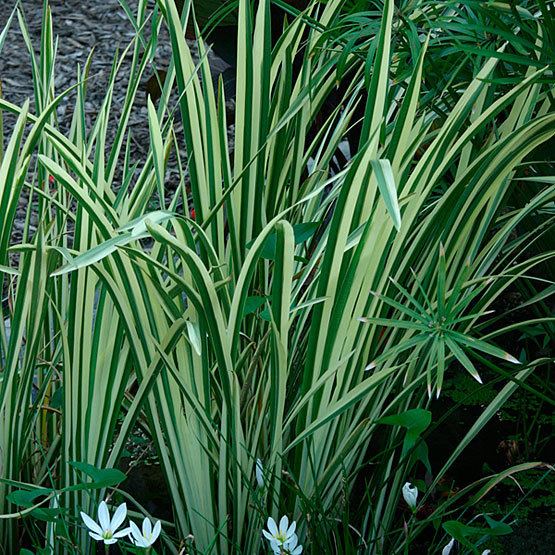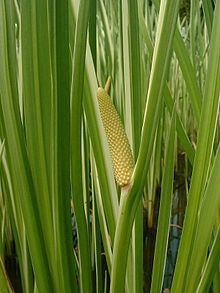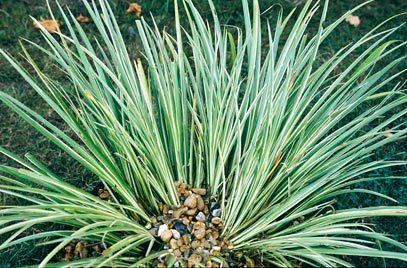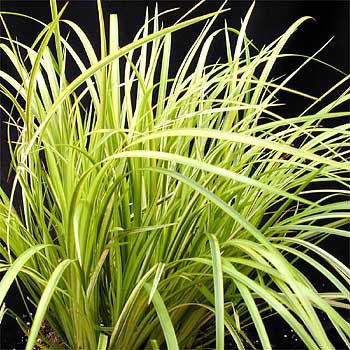Clade Monocots Family AcoraceaeMartinov Higher classification Acoraceae | Clade Angiosperms Order AcoralesReveal Scientific name Acorus Rank Genus | |
 | ||
Lower classifications Sweet flag, Acorus gramineus, Acorus americanus | ||
Acorus calamus and acorus gramineus
Acorus is a genus of monocot flowering plants. This genus was once placed within the family Araceae (aroids), but more recent classifications place it in its own family Acoraceae and order Acorales, of which it is the sole genus of the oldest surviving line of monocots. Some older studies indicated that was placed in a lineage (the order Alismatales), that also includes aroids (Araceae), Tofieldiaceae, and several families of aquatic monocots (e.g., Alismataceae, Posidoniaceae). However, modern phylogenetic studies demonstrate that Acorus is sister to all other monocots. Common names include Calamus and Sweet Flag.
Contents
- Acorus calamus and acorus gramineus
- Characteristics
- Taxonomy
- Species
- Etymology
- Distribution and habitat
- Ecology
- Toxicity
- Uses
- References

The genus is native to North America and northern and eastern Asia, and naturalised in southern Asia and Europe from ancient cultivation. The known wild populations are diploid except for some tetraploids in eastern Asia, while the cultivated plants are sterile triploids, probably of hybrid origin between the diploid and tetraploid forms.

Characteristics

The inconspicuous flowers are arranged on a lateral spadix (a thickened, fleshy axis). Unlike aroids, there is no spathe (large bract, enclosing the spadix). The spadix is 4–10 cm long and is enclosed by the foliage. The bract can be ten times longer than the spadix. The leaves are linear with entire margin.
Taxonomy

Although the family Acoraceae was originally described in 1820, since then Acorus has traditionally been included in Araceae in most classification systems, as in the Cronquist system. The family has recently been resurrected as molecular systematic studies have shown that Acorus is not closely related to Araceae or any other monocot family, leading plant systematists to place the genus and family in its own order. This placement currently lacks support from traditional plant morphology studies, and some taxonomists still place it as a subfamily of Araceae, in the order Alismatales. The APG III system recognizes order Acorales, distinct from the Alismatales, and as the sister group to all other monocots. This relationship is confirmed by more recent phylogenetic studies.
Species
In older literature and on many websites, there is still much confusion, with the name Acorus calamus equally but wrongfully applied to Acorus americanus (formerly Acorus calamus var. americanus).
As of July 2014, the Kew Checklist accepts only 2 species, one of which has three accepted varieties:
Acorus from Europe, China and Japan have been planted in the United States.
Etymology
The name 'acorus' is derived from the Greek word 'acoron', a name used by Dioscorides, which in turn was derived from 'coreon', meaning 'pupil', because it was used in herbal medicine as a treatment for inflammation of the eye.
Distribution and habitat
These plants are found in wetlands, particularly marshes, where they spread by means of thick rhizomes. Like many other marsh plants, they depend upon aerenchyma to transport oxygen to the rooting zone. They frequently occur on shorelines and floodplains where water levels fluctuate seasonally.
Ecology
The native North American species appears in many ecological studies. Compared to other species of wetland plants, they have relatively high competitive ability. Although many marsh plants accumulate large banks of buried seeds, seed banks of Acorus may not accumulate in some wetlands owing to low seed production. The seeds appear to be adapted to germinate in clearings; after a period of cold storage, the seeds will germinate after seven days of light with fluctuating temperature, and somewhat longer under constant temperature. A comparative study of its life history traits classified it as a "tussock interstitial", that is, a species that has a dense growth form and tends to occupy gaps in marsh vegetation, not unlike Iris versicolor.
Toxicity
Products derived from Acorus calamus were banned in 1968 as food additives by the United States Food and Drug Administration. The questionable chemical derived from the plant was β-asarone. Confusion exists whether all strains of A. calamus contain this substance.
Four varieties of A. calamus strains exist in nature: diploid, triploid, tetraploid and hexaploid. Diploids do not produce the carcinogenic β-asarone. Diploids are known to grow naturally in Eastern Asia (Mongolia and C Siberia) and North America. The triploid cytotype probably originated in the Himalayan region, as a hybrid between the diploid and tetraploid cytotypes. The North American Calamus is known as Acorus calamus var. americanus or more recently as simply Acorus americanus. Like the diploid strains of A. calamus in parts of the Himalayas, Mongolia, and C Siberia, the North American diploid strain does not contain the carcinogenic β-asarone. Research has consistently demonstrated that "β-asarone was not detectable in the North American spontaneous diploid Acorus [Calamus var. Americanus]".
Uses
The parallel-veined leaves of some species contain ethereal oils that give a sweet scent when dried. Fine-cut leaves used to be strewn across the floor in the Middle Ages, both for the scent, and for presumed efficacy against pests.
